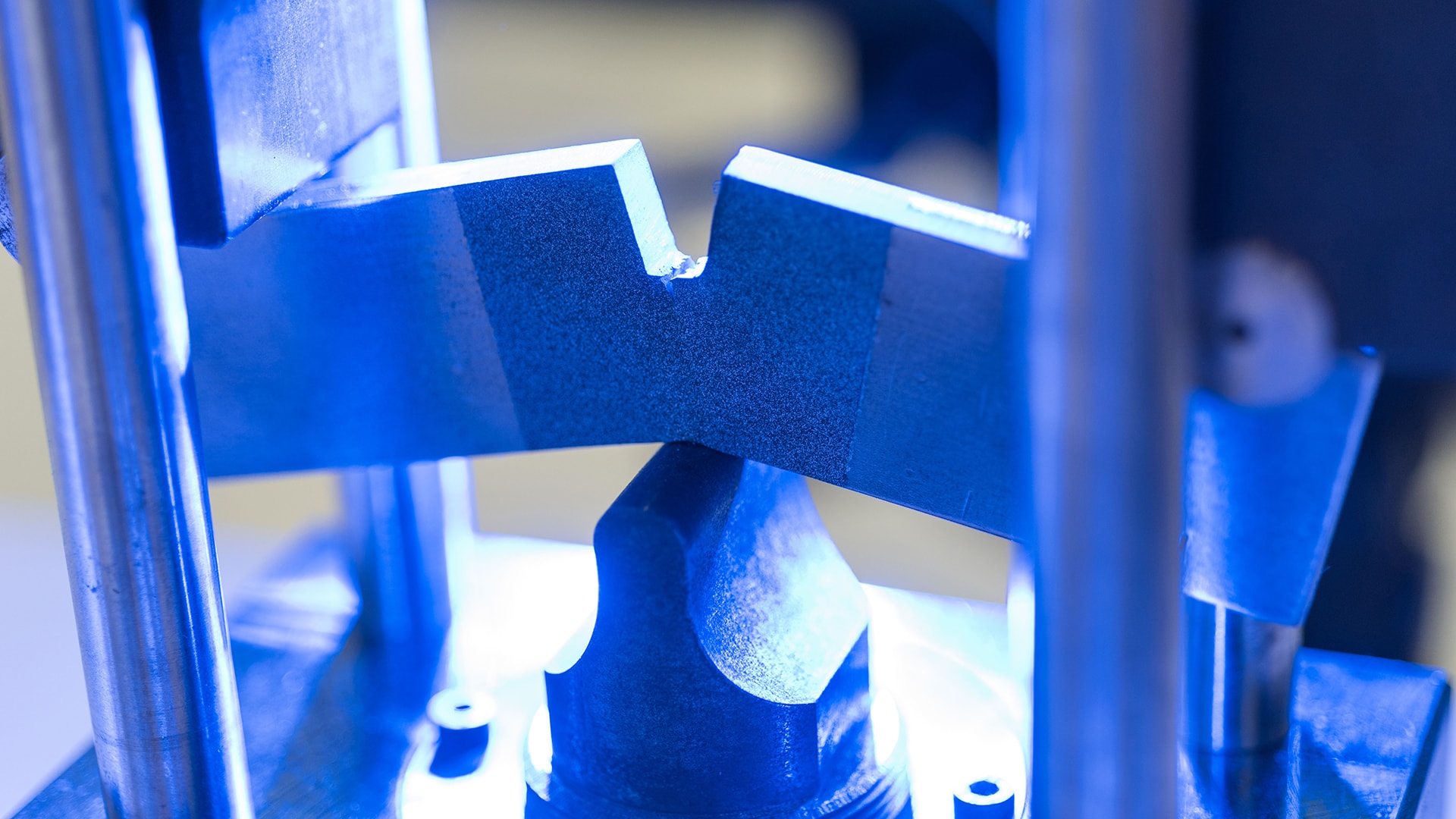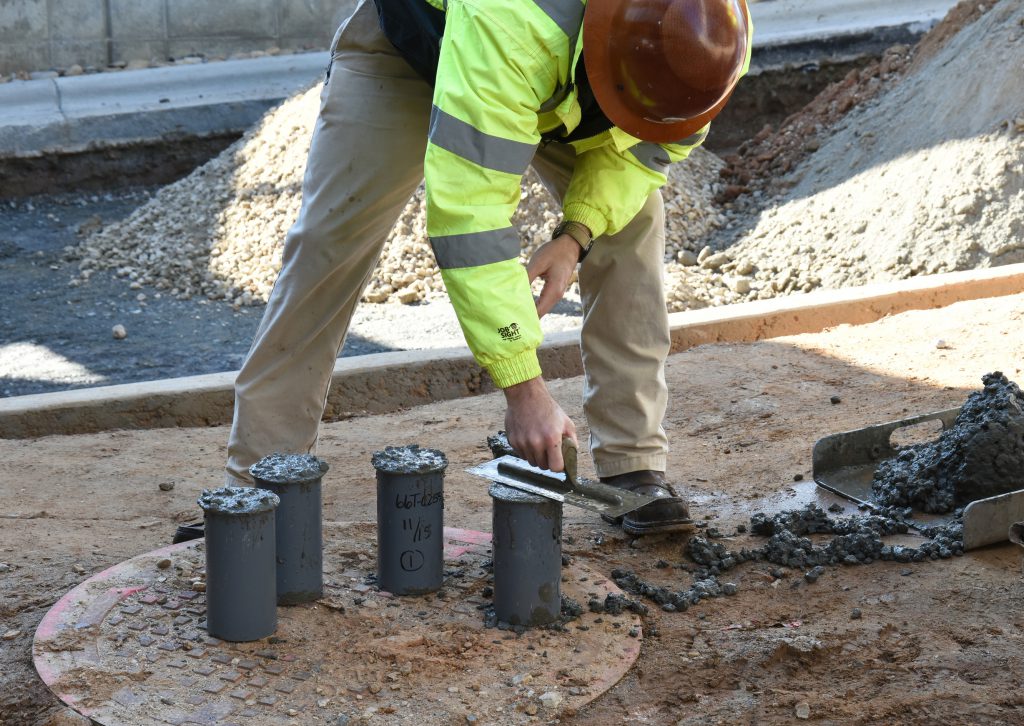Opening Accuracy: Materials Test Lab Quality Introduced
Wiki Article
Pressing Borders: Discovering Strategies in Products Screening
In this seminar, we will certainly delve right into the sophisticated and innovative techniques utilized in the area of materials screening. As technology developments, so does our ability to push the borders of what is possible in testing and assessing various materials. Join us as we get started on a journey of discovery and expedition in the world of materials testing.Advanced Imaging Technologies
Advanced imaging innovations have actually transformed the field of products screening, allowing researchers to dig much deeper right into the structural residential properties of products. These advanced methods have actually opened brand-new avenues for studying and evaluating products, giving valuable insights that were previously unattainable.One such sophisticated imaging innovation is X-ray calculated tomography (CT), which uses X-ray beams to develop 3D photos of the inner structure of materials. By capturing numerous X-ray photos from various angles and reconstructing them, researchers can envision the internal functions and problems of materials with phenomenal information. This non-destructive strategy is specifically useful for examining complex structures, such as composite materials or parts with detailed geometries.

Moreover, atomic pressure microscopy (AFM) has actually emerged as an important device for identifying the surface area residential or commercial properties of products at the nanoscale. By checking a sharp probe throughout the product's surface area, AFM can gauge forces and create comprehensive topographic maps, offering useful details concerning surface area roughness, mechanical residential or commercial properties, and adhesion forces.
Cutting-Edge Simulation Methods
A variety of advanced simulation techniques are pressing the limits of products testing, providing researchers unmatched insights into material behavior. These cutting-edge simulation methods employ advanced computational strategies to version and forecast the efficiency of materials under different conditions. By simulating the behavior of products at the atomic and molecular level, scientists can better understand the hidden devices that regulate material residential properties and performance.An additional powerful method is finite aspect evaluation (FEA), which splits an intricate structure or product into smaller, more workable components and evaluates their actions under various tons. FEA is extensively utilized in design and products science to examine the response of materials to mechanical, thermal, and electro-magnetic pressures.
Additionally, multiscale modeling incorporates different simulation techniques to connect the void between atomistic and macroscopic ranges. By incorporating information from different length ranges, researchers can accurately anticipate the habits of materials under real-world conditions.
These innovative simulation techniques are transforming products screening by giving insights that are otherwise tough or difficult to acquire experimentally. They allow scientists to maximize product design, explore new materials, and enhance the performance and dependability of existing products in a variety of industries, from aerospace to biomedical.
Non-Destructive Testing Techniques

- Countless non-destructive testing strategies are utilized in products evaluating to check out the residential properties and integrity of materials without creating damage. These methods play a crucial duty in numerous industries, consisting of aerospace, automotive, building, and production, where the quality and dependability of products are paramount.
One frequently made use of non-destructive testing method is ultrasonic screening. This method includes sending out high-frequency audio waves through a material and examining the mirrors that get better. By measuring the time it considers the mirrors to return, technicians can identify the density of the product, detect interior flaws, and evaluate the general architectural honesty.
An additional widely used technique is radiographic testing, which uses X-rays or gamma rays to check products. This approach is specifically reliable for detecting internal problems such as incorporations, splits, or gaps. By subjecting the material to radiation and catching the discover this resulting image on a film or digital detector, technicians can evaluate the quality and soundness of the product.
Other non-destructive screening methods include magnetic fragment screening, dye penetrant screening, and eddy current screening. Each method has its own one-of-a-kind benefits and is suitable for particular material kinds and applications.
High-throughput Screening Approaches
High-throughput testing techniques offer a comprehensive and effective ways of evaluating products in large amounts during the screening process. This technique involves the synchronised testing of numerous examples, enabling the fast identification of products with desired characteristics or residential properties.One of the crucial benefits of high-throughput screening techniques is the ability to check a wide variety of products in a brief time period. Standard screening methods usually require labor-intensive and taxing processes, making it challenging to review lots of samples. With high-throughput screening, scientists can promptly assess materials on a range that was formerly not feasible.
Another benefit of high-throughput screening is its capability to recognize products with specific residential properties or features. By testing a large number of samples, researchers can determine products that show details residential or commercial properties, check out this site such as high toughness or exceptional conductivity. This enables scientists to tailor materials for details applications or sectors.
High-throughput testing techniques additionally enable the discovery of new materials with unique homes. By checking big quantities of materials, researchers can uncover products that show unique features or actions. This can cause the advancement of new materials that have a vast array of applications, from advanced electronic devices to power storage.
Novel Multi-scale Evaluation Approaches
The execution of novel multi-scale analysis methods boosts the accuracy and accuracy of products examining procedures. By integrating multiple ranges of evaluation, researchers have the you can try this out ability to obtain a much more extensive understanding of the behavior and properties of products. Conventional materials examining techniques usually concentrate on macroscopic residential properties, however these approaches stop working to capture the detailed details and interactions that happen at smaller ranges.One example of an unique multi-scale analysis approach is making use of computational modeling. By simulating the habits of materials at various scales, scientists can predict and comprehend their mechanical, thermal, and chemical homes. This permits more exact predictions and optimizations of product performance.
One more approach includes making use of advanced imaging strategies, such as electron microscopy and atomic force microscopy - materials test lab. These methods make it possible for researchers to envision and evaluate products at the nanoscale, providing insights right into their microstructure and composition. By integrating these monitorings with macroscopic testing data, a much more complete photo of the product's actions can be obtained
Moreover, the assimilation of device discovering formulas and data analytics in products testing has also boosted the precision of analysis. These techniques can recognize patterns and correlations in big datasets, permitting for faster and more reliable evaluation of materials homes.
Verdict
In final thought, the exploration of strategies in materials screening has actually led to significant innovations in different areas. Non-destructive screening techniques have actually allowed the evaluation of product integrity without creating damage. These innovations have pressed the limits of products testing and led the method for more research and innovation.
A variety of state-of-the-art simulation techniques are pushing the limits of products testing, using researchers extraordinary insights into product habits (materials test lab). By imitating the actions of products at the atomic and molecular degree, researchers can much better understand the underlying devices that govern product residential or commercial properties and efficiency
Numerous non-destructive testing strategies are used in materials checking to check out the homes and honesty of materials without causing damage. By revealing the product to radiation and capturing the resulting picture on a movie or electronic detector, technicians can assess the high quality and sturdiness of the material.
By testing big quantities of products, scientists can reveal products that show novel qualities or habits.
Report this wiki page